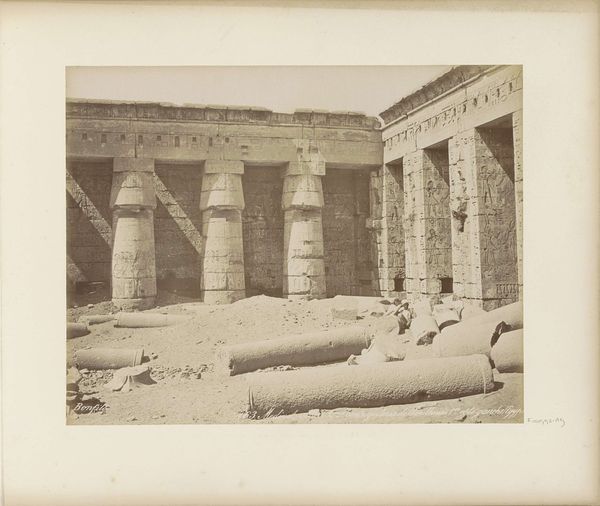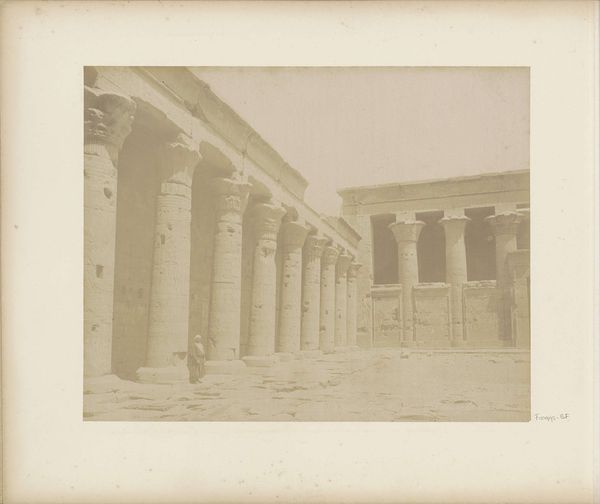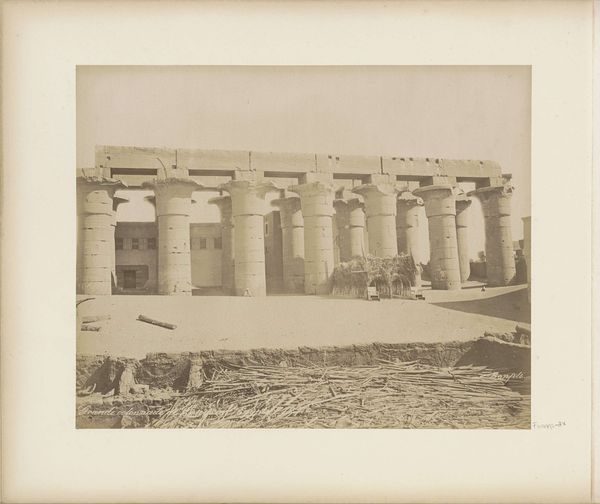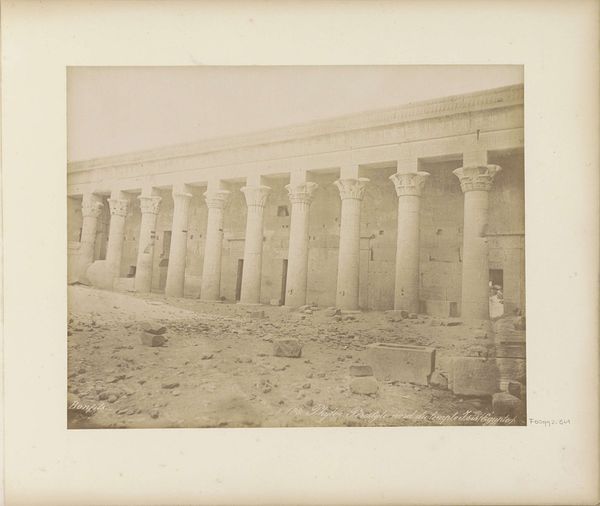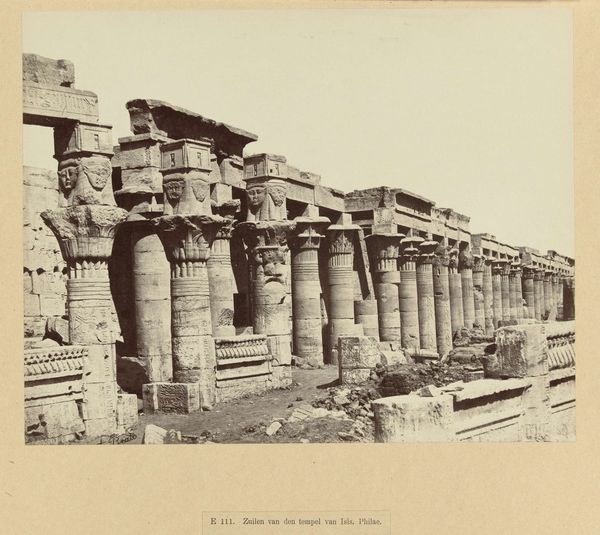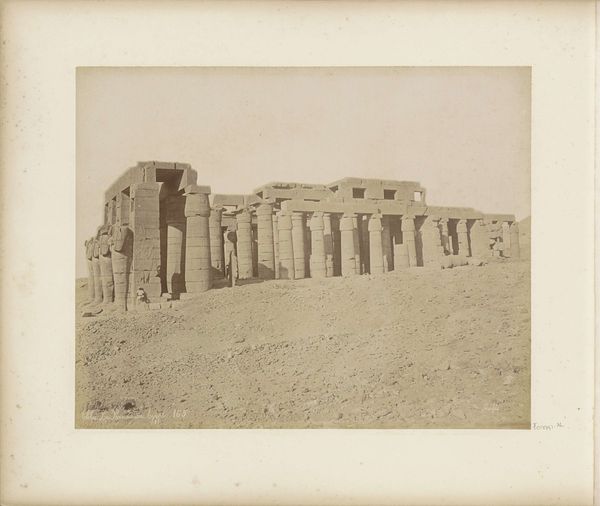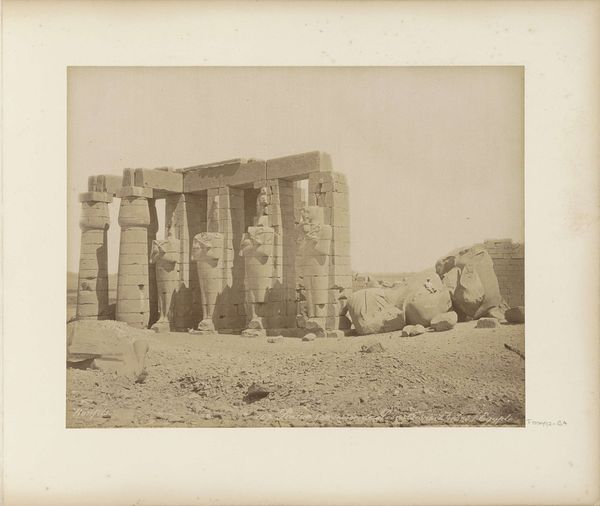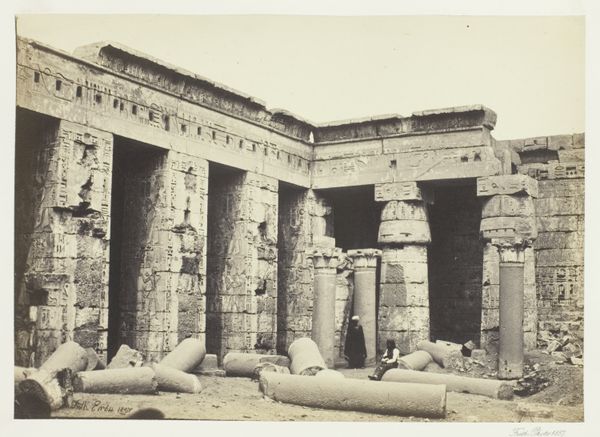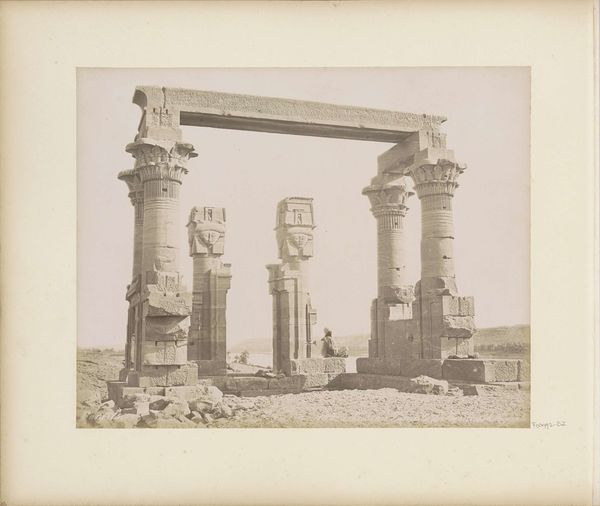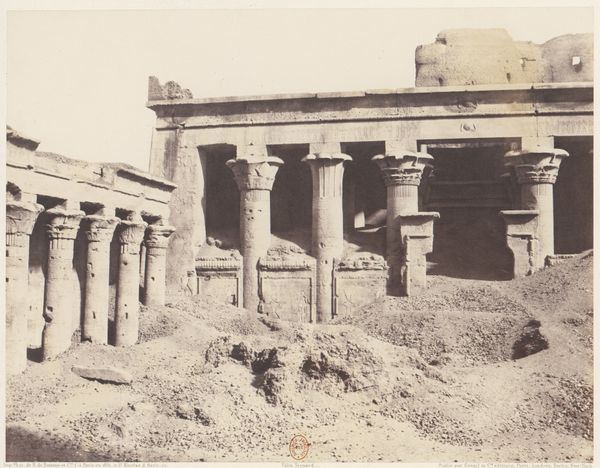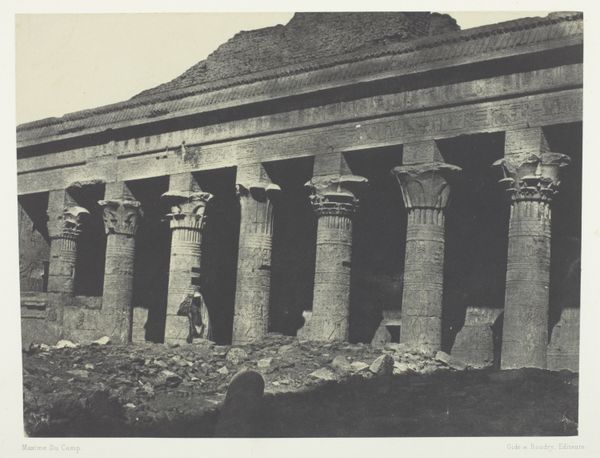
photography, architecture
#
landscape
#
ancient-egyptian-art
#
photography
#
ancient-mediterranean
#
architecture
#
realism
Dimensions: height 226 mm, width 281 mm
Copyright: Rijks Museum: Open Domain
Curator: The scale is immense. There's a subdued monumentality here, softened by the photographic medium. Editor: Indeed. We’re looking at “Kariatiden te Medinet-Habou,” a photograph created by C. & G. Zangaki, likely sometime between 1870 and 1890. The image depicts the Medinet Habu temple in Egypt. What initially strikes me is the stark linearity and rhythm of the architectural elements. Curator: Precisely! The photograph showcases a meticulous construction. Look how the play of light and shadow emphasizes the blocky texture and sheer physical labor that went into building the original structures. This challenges any sense of romantic exoticism sometimes found in representations of Egypt. Editor: I concur. There's a stark realism at play. The frame highlights the materiality of the massive sandstone pillars. You can almost feel the weight of each block. Consider the social context. The Zangaki brothers capitalized on the growing Western fascination with the "Orient," creating photographs like these for commercial sale. It invites us to question who controlled the visual narrative and the labor involved in both the ancient construction and its 19th-century documentation. Curator: That said, I see a successful exercise in form. The arrangement of vertical columns against the horizontal entablature, with human figures included as compositional elements to showcase the enormous scale of the site... The organization and balance speak volumes. The symmetry contributes a static power. Editor: I’d say it highlights the power dynamics—those imposing architectural forms shaped by human labor for both divine authority and those who claim divine right. But considering Zangaki's creative process, from camera obscura and development in darkrooms—materials mattered. What does this do to our idea of a pure landscape? Curator: I can agree on that. I think we are close to understand the relationship that this work had between subject, materiality and its intrinsic aesthetic values. Editor: This image holds space between historical analysis and aesthetics, and allows us to bring our current awareness to reconsider labor, material and our perspective of these sites today.
Comments
No comments
Be the first to comment and join the conversation on the ultimate creative platform.

